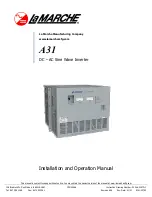
tional change to an external reference making the sum of
the references move too far away from the optimal
reference. The reference range cannot exceed the feedback
range.
If preset references are desired, they are preset in
parameters 215 to 218 Preset reference
. See the description
in
chapter 4.3.1 Reference function
and
chapter 4.3.1 Handling of References
If a current signal is used as the feedback signal, it is only
possible to use voltage as an analog reference. Use
to determine which terminal is to be used and
which parameters are to be programmed.
Reference type
Terminal
Parameters
Pulse
33
307, 327
Voltage
53
308, 309, 310
Current
60
314, 315, 316
Preset references
215-218
Bus reference
68+69
The bus reference can only be preset via serial communi-
cation.
NOTICE
It is recommended to preset terminals that are not being
used to
[0] No function
.
Differentiator gain limit
If very rapid variations occur in an application in either the
reference signal or the feedback signal, the deviation
between the reference/setpoint and the process's actual
mode changes quickly. The differentiator can then become
too dominant. This is because it is reacting to the
deviation between the reference and the process's actual
mode, and the quicker the variance changes, the more
powerful the differentiator's frequency contribution
becomes. The differentiator's frequency contribution can
therefore be limited in such a way that both a reasonable
differentiation time for slow changes and an appropriate
frequency contribution for quick changes can be preset.
This is done using the speed regulation in
parameter 420
Speed PID Differentiator gain limit
and process regulation in
parameter 443 Process PID Differentiator gain limit
.
Lowpass filter
If there is a lot of noise in the feedback signal, these can
be dampened using an integrated lowpass filter. A suitable
lowpass filter time constant is preset. If the lowpass filter is
preset to 0.1 s, the cut-off frequency is 10 RAD/s,
corresponding to (10/2 x ) = 1.6 Hz. This means that all
currents/voltages that vary by more than 1.6 oscillations/s
are dampened. In other words, there is only regulation on
the basis of a feedback signal that varies by a frequency of
less than 1.6 Hz. The appropriate time constant is selected
in speed regulation in
parameter 421 Speed PID lowpass
filter time
and in process regulation in
parameter 444
Process PID lowpass filter time
.
Inverse regulation
Normal regulation means that the motor speed is
increased when the reference/setpoint is greater than the
feedback signal. If it is necessary to run inverse regulation,
in which the speed is reduced when the reference/setpoint
is greater than the feedback signal, programme
parameter
437 PID normal/inverted control
[1] Inverted
.
Anti-Windup
In the factory the process regulator is preset with an active
anti-windup function. When either a frequency limit, a
current limit or a voltage limit is reached, the integrator is
initialised at a frequency corresponding to the present
output frequency. This is a means of avoiding the
integration of a variance between the reference and the
process's actual mode that cannot be deregulated by
changing the speed. This function can be deselected in
parameter 438 Process PID anti windup
.
Starting conditions
In some applications, the optimal setting of the process
regulator means that a relatively long period of time
passes before the required process condition is achieved.
In these applications, define an output frequency to which
the frequency converter must run the motor before the
process regulator is activated. This is done by
programming a start frequency in
parameter 439 Process
PID start frequency
.
Programming
Design Guide
MG27E402
Danfoss A/S © Rev. May/2014 All rights reserved.
95
4
4
















































